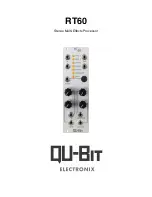
5
Post-Approval Patient Cohort
Edwards continues to follow a post-approval cohort of 267 patients
with isolated valve replacements (AVR) (Model 2700) from four
centers of the original clinical trial for the Carpentier-Edwards
PERIMOUNT pericardial bioprosthesis since November 1981. The
population is comprised of 171 (64%) males and 96 (36%)
females. The mean age (± standard deviation) of these patients at
the time of implant was 64.9 ±11.8 years and ranged from 21 to
86 years. A total of 140 deaths occurred between 1981 and 1994.
Thirty-one (22.1%) of the 140 deaths were determined to be valve-
related. The actuarial valve-related survival is 83% at 12 years. In
the postoperative period, 16 patients required valve explants. One
event occurred as a result of perivalvular leak, two due to
endocarditis/sepsis and 13 were due to valve dysfunction. The
actuarial explant-free rate is 90% at 12 years.
The follow up methods used at each clinic included hospital
visits, office visits, and contact by telephone or letter with
either the patient, the patient’s family, or local doctor.
Table 4 summarizes operative (
≤
30 days) and postoperative
(>30 days) valve-related complication rates. The postoperative
linearized complication rates are based on 2131.5 patient years of
follow-up. The Carpentier-Edwards PERIMOUNT pericardial
bioprosthesis was implanted in this cohort from September 1981
through December 1983 with a mean follow-up of 8.1 years. The
267 patients in the cohort have a total of 2152 patient years of
follow-up. Of the 127 patients eligible for follow-up (not considered
dead or explanted prior to the 1994 update) 17 (13.4%) patients
are considered lost to follow-up. In the operative period, there were
eight thromboembolic events, four hemorrhagic anticoagulation
complications (HAC), one perivalvular leak and one valve
dysfunction. In the postoperative period there were
31 thromboembolic events, eight hemorrhagic anticoagulation
complications, four perivalvular leaks, two incidences of hemolysis,
seven cases of endocarditis and 53 incidents of valve dysfunction
in 38 patients. Valve dysfunction included 23 patients with
hemodynamic valve dysfunction, 13 required reoperation/explant,
and valve dysfunction was the cause of death in two patients.
While overall patient survival is 45% at 12 years, freedom from
valve related deaths is 83%. These results suggest a patient
population which presents with morbidity from many
non-valve
related disorders. In addition, 12-year complication rates for
freedom from explants, thromboembolism, endocarditis and HAC
were above 80%. The 12-year freedom from valve dysfunction is
78%. This rate includes all forms of dysfunction, including PV
leak, regurgitation, stenosis, leaflet disruption, calcification and
unspecified dysfunction.
Improvement in NYHA functional classification has also been
demonstrated postoperatively. Forty-five percent of the patients
are in NYHA Functional Class I at 12 years post implant with
the Carpentier-Edwards pericardial valve.
This data was compiled as of July 1994 from a multi-center
clinical trial conducted by Edwards Lifesciences. Follow-up on
this post-approval cohort is continuing, and periodic updates
will be available by contacting Edwards Lifesciences LLC,
Cardiovascular Surgery Marketing Department,
One Edwards Way, Irvine, CA 92614-5686.
8. Individualization of Treatment
Bioprosthetic heart valve recipients should be maintained on
anticoagulant therapy, except where contraindicated, during the
initial stages after implantation as determined by the physician
on an individual basis. Long-term anticoagulant and/or
antiplatelet therapy should be considered for patients with a
dilated left atrium, a history of thrombotic events, an absence
of sinus rhythm, calcification of the atrial wall, or with atrial
fibrillation or flutter.
The decision to use a tissue valve must ultimately be made by
the physician on an individual basis after a careful evaluation of
the short-term and long-term risks and benefits to the patient
and consideration of alternative methods of treatment.
8.1 Specific Patient Populations
The safety and effectiveness of the Carpentier-Edwards
PERIMOUNT Magna pericardial bioprosthesis has not been
established for the following specific populations because it
has not been studied in these populations:
•
patients who are pregnant
•
nursing mothers
•
patients with abnormal calcium metabolism (e.g. chronic
renal failure, hyperparathyroidism)
•
patients with aneurismal aortic degenerative conditions
(e.g. cystic medial necrosis, Marfan’s syndrome)
•
children, adolescents, or young adults
9. Patient Counseling Information
Careful and continued medical follow up (at least by an annual
visit to the physician) is advised so that valve-related
complications, particularly those related to material failure, can
be diagnosed and properly managed.
Patients with bioprostheses are at risk from bacteremia
(e.g. undergoing dental procedures) and should be advised
about prophylactic antibiotic therapy.
Patients should be encouraged to carry their Implantation Data
Card at all times and to inform their healthcare providers that
they have an implant when seeking care.
10. How Supplied
10.1 Available Models and Sizes
The Model 3000TFX is available in mounting diameter sizes
19, 21, 23, 25, 27, and 29 mm (reference Table A for nominal
specifications).
10.2 Packaging
The Model 3000TFX PERIMOUNT Magna pericardial
bioprosthesis is provided sterile and nonpyrogenic packaged in
glutaraldehyde, in a plastic jar to which a seal has been applied.
Each jar is shipped in a styrofoam enclosure containing a
temperature indicator to determine if the valve has been
exposed to extreme temperatures during transit. Upon receipt,
immediately remove the styrofoam and inspect the indicator.
149256001A_EN_ES_PT 16.2.2005 14:30 Uhr Seite 5






































